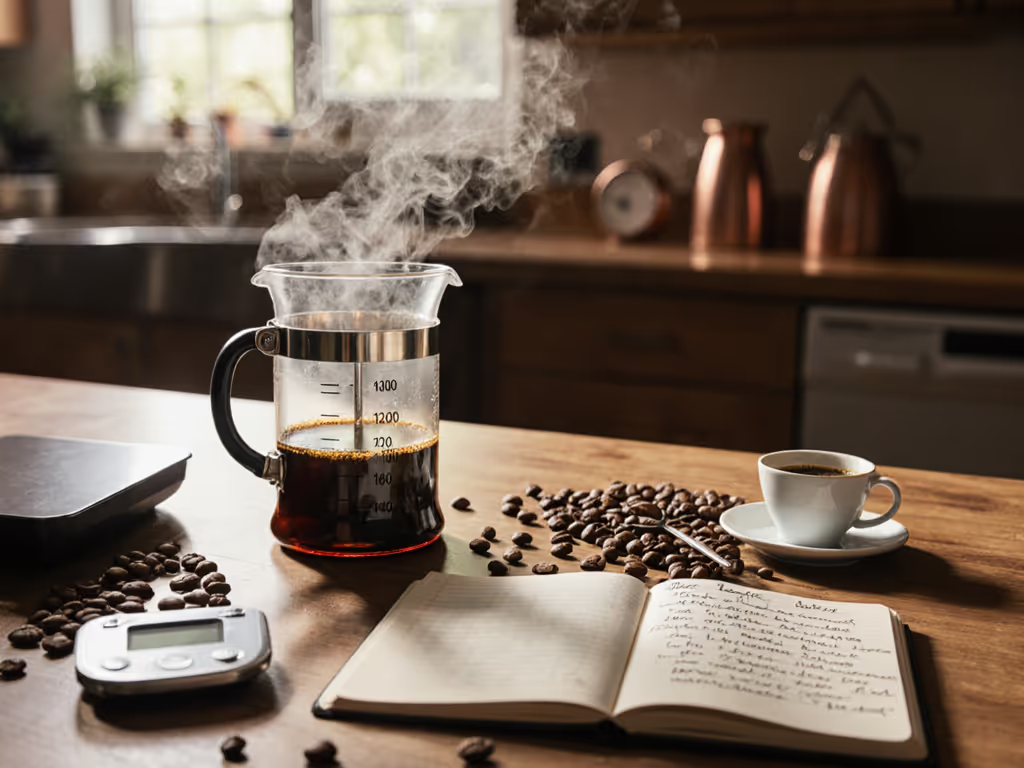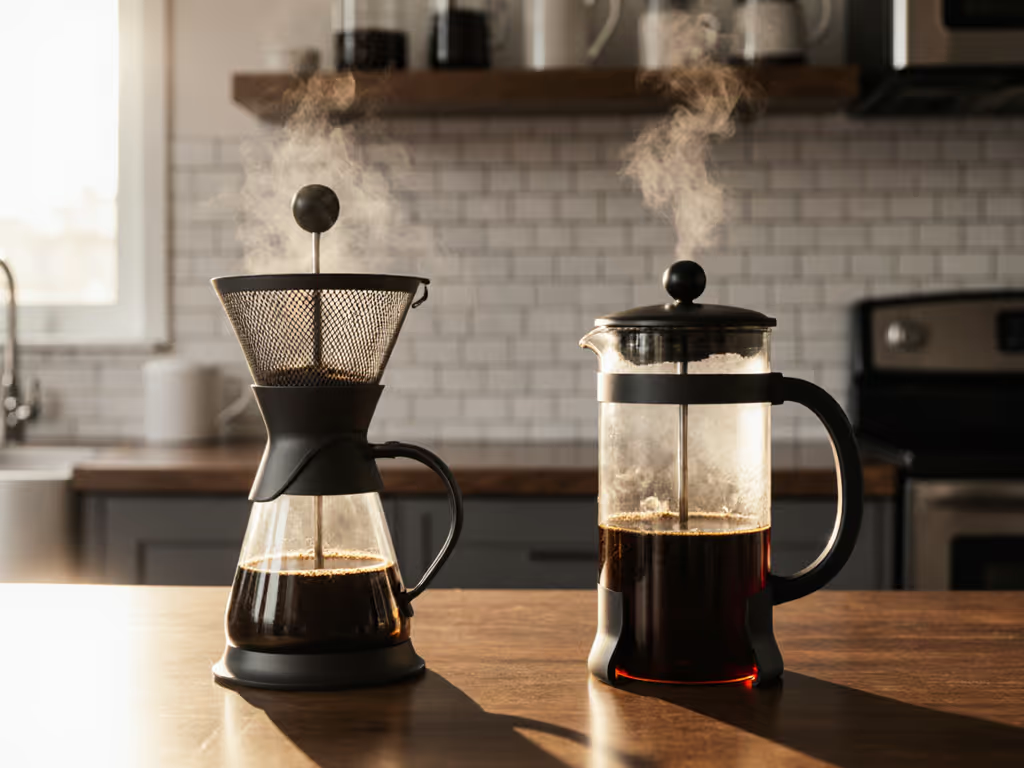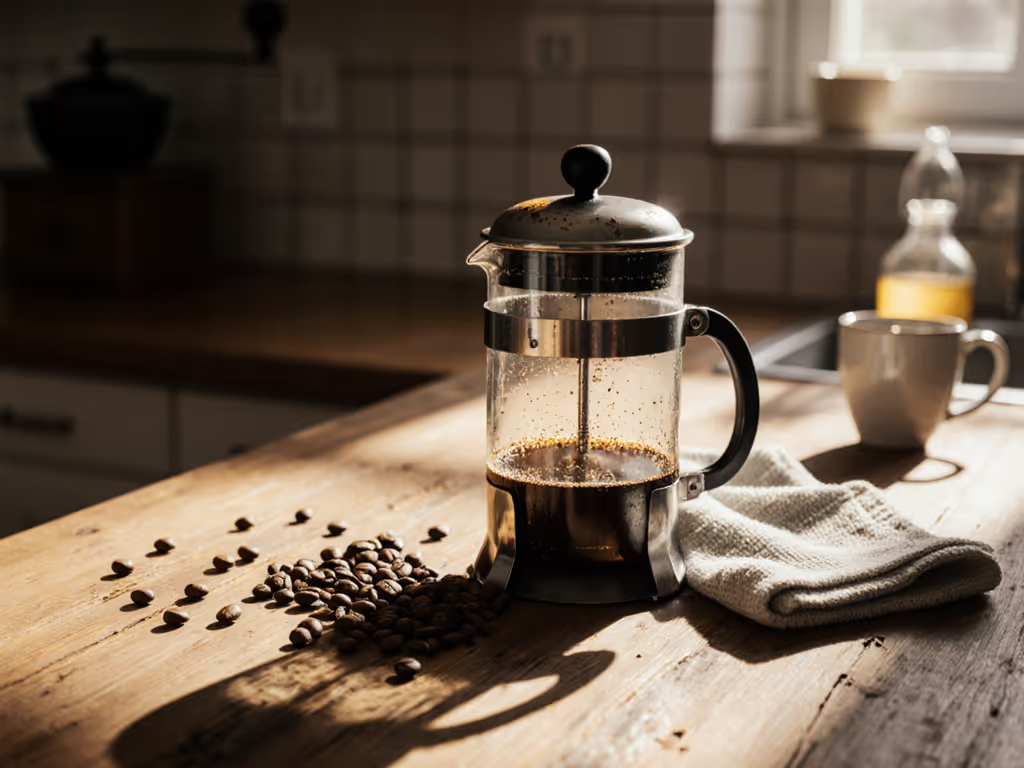
Modern French Press Mastery: Consistent Cups Every Time

If you've ever wondered why your modern French press delivers a stellar cup one morning and a muddy disappointment the next, you're not alone. The truth is, the French press coffee maker (that humble champion of immersion brewing) holds incredible potential when you approach it with the right mindset. Forget chasing perfection through complicated rituals; consistent, café-worthy coffee comes from understanding just a few key variables. Let's transform your daily brew from guesswork to grounded mastery.
Why does my French press coffee taste inconsistent from day to day?
I've seen this countless times: someone changes their grind size, water temperature, and ratio simultaneously, then declares the French press "unreliable." Sound familiar? I once watched a friend do exactly this, convinced the press itself was flawed. But when we reset, using just one ratio, one grinder setting, and taking honest tasting notes, their "sweet spot" emerged within two brews. That afternoon taught me that mastery comes from small, deliberate adjustments and honest tasting notes. Start with one knob, turn it slowly, taste on purpose. Find what works for your palate and stick with it long enough to notice subtle shifts.
What's the ideal grind size to avoid sludge without sacrificing body?
The golden rule for a modern French press? Coarse, but not too coarse. Think sea salt or rough breadcrumbs, not the fine powder that slips through your filter or creates that dreaded silty bottom. Too fine means over-extraction and bitter notes; too coarse yields weak, hollow coffee. If you're using a hand grinder, aim for 20 to 25 rotations per dose. For electric grinders, start with the setting used for percolators or French press modes. Crucially, avoid changing multiple variables at once, and if you adjust your grind, keep your ratio and water minerals consistent. And remember: start small, taste big. A single click adjustment can transform your cup.
Start with one knob, turn it slowly, taste on purpose.
Does water mineral content really matter for French press coffee?
Absolutely, but you don't need a chemistry degree. While tap water varies wildly, aim for 100 to 150 mg/L total dissolved solids (TDS) for balanced extraction. Too soft (below 50 mg/L), and your coffee tastes flat; too hard (above 200 mg/L), and bitterness dominates. In my community workshops, I've seen people transform their coffee press results simply by switching from distilled to filtered tap water. No need for expensive mineral blends. Most quality countertop filters (like activated carbon types) bring water into the sweet zone. The key is consistency: use the same water source each time until you've dialed in your other variables.
How do I scale my French press for different mug sizes without recalculating everything?
This is where baseline recipes for mug sizes become your best friend. Forget staring at complicated charts:
- Single mug (8-12 oz): 15g coffee to 250ml water, 4-minute steep
- Duo mug (16 oz): 30g coffee to 500ml water, 4-minute steep
- Small group (24 oz): 45g coffee to 750ml water, 4:30 steep
Notice the pattern? It's always a 1:16.5 ratio with consistent timing. For precise measurements and troubleshooting, see our French press coffee ratio guide. Want to adjust strength? Change only the coffee dose (not the water volume or time). This one-variable-at-a-time framing prevents frustration when scaling up for weekend guests or office mornings. And yes, these baselines work whether you're using a glass French press coffee maker or a travel-friendly stainless steel model.
What's the fastest cleanup routine that won't clog my sink?
The "slosh and splash" method I teach my urban clients takes 45 seconds:
- Push the plunger halfway to compress grounds
- Pour spent coffee into compost or trash (not sink!)
- Rinse carafe with hot water while swirling
- Wipe mesh filter with a dedicated brush (kept right by the press)
This eliminates the #1 cause of clogged drains: coffee grounds down the sink. For outdoor enthusiasts, I recommend a collapsible silicone funnel that directs grounds straight into your campsite trash. The key is making cleanup part of your ritual (not an afterthought).
How do I choose a durable French press that lasts?
For home use, prioritize thermal shock resistance. Double-walled glass or stainless steel models handle temperature swings better than single-walled glass. In offices, look for dishwasher-safe components and replaceable mesh filters. Outdoor adventurers need something that survives bumps: stainless steel with silicone grips and secure lids. Whatever you choose, sensory descriptors anchored to actions matter more than price tags: listen for a smooth-plunging action, feel the weight of quality materials, and notice how well it retains heat after 20 minutes.
What's the simplest way to improve my daily French press routine immediately?
Create a 30-second tasting ritual:
- Pour a small sip into a clear glass
- Note one observation: "brighter than yesterday" or "slightly bitter"
- Adjust one variable tomorrow based on that note
This tiny habit transforms random brewing into deliberate practice. You'll find your rhythm faster than chasing "perfect" gear. Because here's what I know from teaching hundreds of households: real mastery isn't about fancy equipment, it's about start small, taste big.
Ready to deepen your practice? Try tracking just one variable this week: grind size, water temperature, or steep time. Notice how small shifts affect your cup. Share your tasting notes with a fellow coffee lover, sometimes an outside perspective reveals what we miss in our own routines. The journey to consistent French press mastery isn't about perfection; it's about progress, one thoughtful cup at a time.
Related Articles


Modern French Press Evolution: Cleaner Coffee, Proven Design



